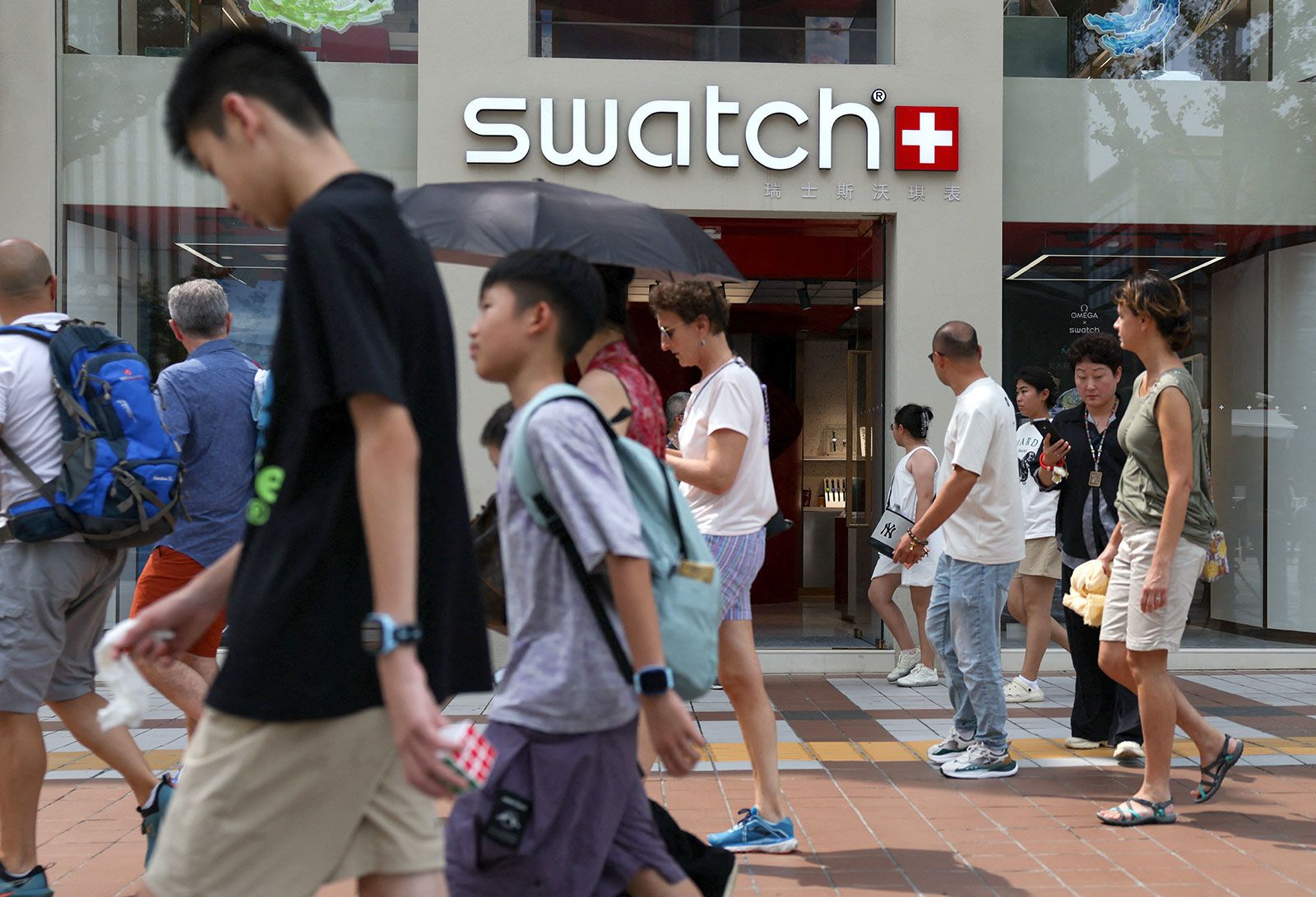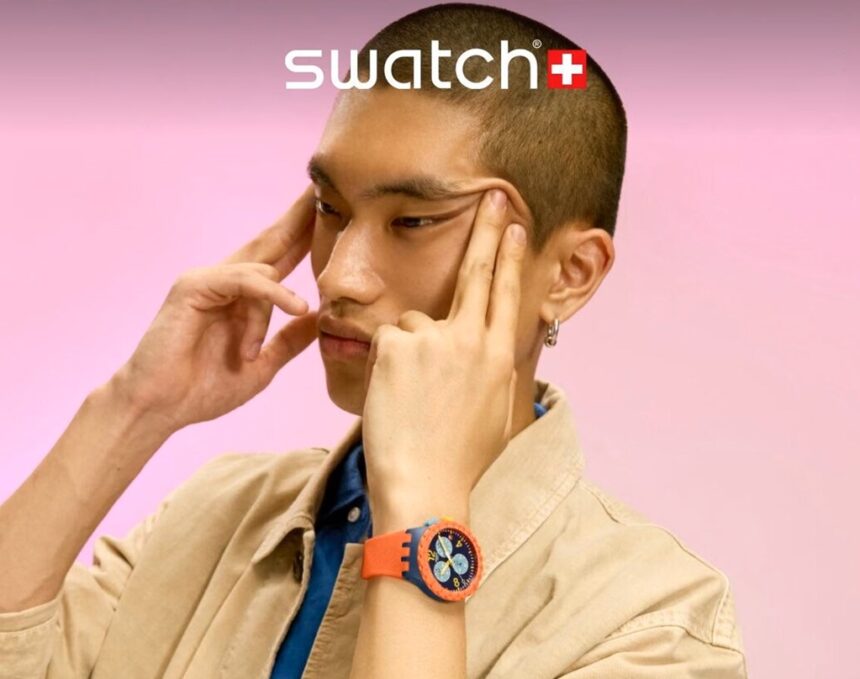BEIJING – Swiss watchmaker Swatch found itself in trouble with customers across China after an advert from its Essentials collection was accused of racial insensitivity. The ad showed an Asian male model pulling at his eyes, which many online saw as promoting the “slanted eye” stereotype—a gesture long regarded as offensive and racist.
The reaction was swift, with Chinese social media users calling for a boycott of Swatch and related brands such as Omega, Longines and Tissot. Despite a public apology and global withdrawal of the advert, many Chinese shoppers felt the apology came too late.
The incident broke over the weekend, as the photo promoting Swatch’s latest men’s collection spread fast on Chinese networks. The image, thought to mock Asian facial features, upset large numbers of online users. Weibo, China’s top microblogging platform with over half a billion users, saw criticism of the campaign trend within hours.
Influencer Mei Hua Long_MHL, who commands a following of 1.1 million, told the Telegraph the ad is clear racism toward Asians” and urged officials to take action. Another influencer, Nie Hua Xiong, with 1.23 million followers, accused Swatch of “trying to insult Asians and degrade Chinese” at a time when the watch market is already under pressure. “Swatch’s image is in shambles,” Nie wrote. “They think a quick apology will fix everything. It won’t.”
First, Boycott Swatch
Further comments showed similar anger. One user, Dylan, wrote, “People might say we overreact, but this is different. The ‘slanted eye’ gesture has always been used to mock us. Using an Asian model only makes it worse.” Another, You Ren Ray, dismissed talk of motive: “First, boycott Swatch.
Don’t waste time debating intent.” Wai, another commenter, questioned the campaign’s design: “Even if they didn’t mean harm, what’s this gesture got to do with selling watches? Were they just after attention?” Many rejected Swatch’s apology, posted on Instagram and Weibo, calling it empty and focused on financial loss, not real regret.
In its statement, Swatch admitted “recent concerns regarding the portrayal of a model” and confirmed a global stop on all related content. The company apologized “for any distress or misunderstanding”. Still, replies on Weibo called the response shallow, saying Swatch never addressed the deeper problem of respect for Chinese customers.
One person wrote, “They make money from us then disrespect us. If we put up with it, we have no backbone.” Another added, “Apologise if you want, but I won’t forgive. Swatch only cares about its profits.”

Other Brand Mistakes
The argument shows how Swatch failed to recognize the message behind the ad’s chosen gesture. This eye-pulling pose has painful links to colonial-era racism and anti-Asian prejudice, a fact recognized worldwide. Given that almost a third of Swatch Group’s sales come from China, Hong Kong and Macau, the mistake stands out even more.
Experts say the creative team may have focused on making an eye-catching photo without thinking of the consequences. “The gesture is a known insult and carries a painful story,” said Dr Li Mei, a professor of cultural studies at Peking University. “Swatch’s mistake shows a lack of cultural understanding among its senior ranks.”
Western brands have been caught out in China before. In 2018, Dolce & Gabbana received harsh criticism after showing a Chinese model struggling to eat Italian food with chopsticks, which resulted in a boycott and a cancelled fashion show in Shanghai.
H&M, Nike and Adidas all came under fire in 2021 after commenting on alleged abuses in Xinjiang. Dior faced pressure in 2023 for a poster featuring a model making a similar gesture to the Swatch case. These examples show how Chinese buyers are ready to challenge brands over any hint of cultural disrespect, especially as pride and patriotism grow.

Share Drop in Value
For Swatch, this row could not come at a worse time. The company’s China sales had already dropped by 11.2% in early 2025, blamed on the wider economic slowdown and rising competition from cheaper watch brands. Now, the boycott could turn away even more shoppers in a crucial market. Following the news, Swatch shares fell by 2.7% on Monday as investors feared the ongoing impact.
Swatch now has the tough task of repairing its reputation in China. Analysts say more must be done than just offering a generic apology. Marketing consultant Chen Hao recommends that Swatch invest in education for staff on cultural awareness and create panels with local experts to check campaigns before launch.
“They need to show they mean change, not just say it.” Peter Xu, a fashion influencer with over seven million followers, thinks the damage might fade if Swatch acts fast and addresses the root issue.
This incident serves as a lesson for global brands selling in China. Understanding and respecting local culture is now expected, not optional. With Chinese consumers quick to organize through social media, brands must pay close attention to the messages their adverts send.
If Swatch wants to regain trust, it will take more than pulling an advert—it will require a fresh commitment to dignity and respect. As one Weibo user summed up, “You want our business? Then show us respect.”














